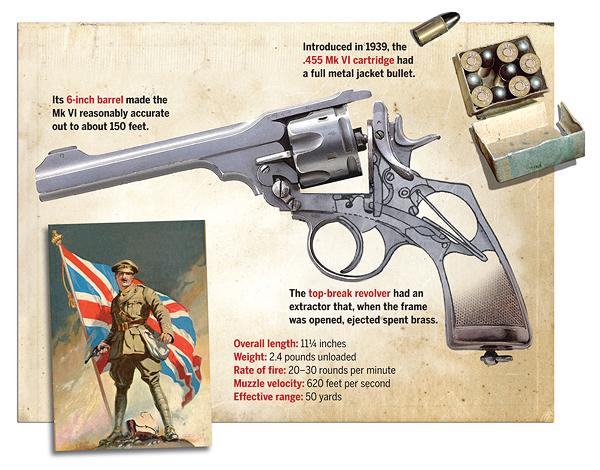
Birmingham-based P. Webley & Son conceived this most quintessentially British of revolvers in the 1870s, when officers purchased their own personal sidearms. Not until 1887 did the British army officially adopt the top-break, double-action design as the Webley Mk I. Other models soon followed. In 1897 the company merged with W&C Scott & Sons to become Webley & Scott Revolver & Arms Co.
Using a.455-caliber round with a relatively slow muzzle velocity of 620 feet per second, the Webley was not, nor was it meant to be, a long-range firearm. But if an enemy charge came too close, requiring an officer to draw his pistol, it had devastating man-stopping power. In 1913 the army adopted the Mk V, which introduced smokeless cordite ammunition and featured a wider, case-hardened cylinder to withstand the more potent round—just in time for World War I.
The ultimate wartime Webley, adopted by the army on May 24, 1915, was the Mk VI, with a squared-off grip, 6-inch barrel and removable front sight. An optional shoulder stock turned the revolver into a carbine, and the phenomenon of trench raiding prompted the design of a bayonet for the pistol.
Webley & Scott manufactured the revolver until 1923, the Royal Small Arms Factory at Enfield Lock from 1921–26. Together the firms turned out some 125,000 Mk VIs. Though declared obsolete in 1932 and replaced by the .38-caliber Enfield No. 2 Mk I revolver, the familiar .455 Webley remained the favored sidearm of many British officers through World War II, the last models finally being retired in 1947.




